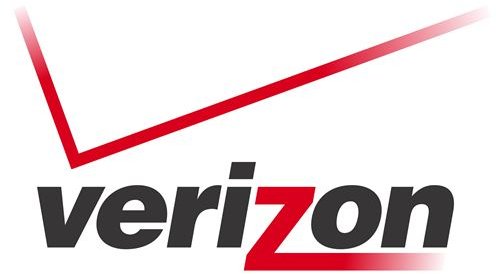Google and Verizon's Framework Deal Leaves Mobile users in the Cold
An Explanation of Contradictory Principles
Google has always fought openly for an open Internet and web surfing platform, while historical Verizon statements contradict and
oppose an open Internet-especially for consumers paying higher premiums for preferential Internet speeds or advertisers paying to put their traffic above others. However, recent talks between the two giants over the Net Neutrality and open Internet issues make for an even more confusing debate-which has apparently offered a proposal for a solution: Only wired Internet users have the right to an Open Internet and the Net Neutrality principles; wireless Internet users, such as those with laptops and, more importantly, mobile phones, need not apply.
Yes, this includes the BlackBerrys and iPhones of the world. Let’s look at the issue and try to figure out why Google and Verizon believe a distinction can be made between wired and wireless Internet, especially considering there is only one Internet-or is there?
Verizon-Google Legislative Framework Deal
Google has historically fought for the Open Internet and has been working with Verizon to form a framework of legislation that would

give consumers a host of rights and responsibilities and the FCC the responsibility of enforcement. Part of the proposal (PDF) covers some basic consumer protections including prohibiting ISPs from stopping consumers from uploading or downloading any legal content, stopping them from downloading and using any legal application, program or other media and stopping consumers from connecting to the Internet using any device they choose. These consumer protections do not include devices or programs that are illegal, cause harm or promote illegal activities such as theft.
Additionally, broadband providers would need to make their customers aware of the services they offer without trying to hide things from them in difficult to read prose and legal jargon. They must disclose all relevant information consumers need to determine what services they want from the ISP, in addition to how the ISP is regulating traffic on its broadband network. This act of full disclosure and easy to understand language is called Transparency.
ISPs and other broadband providers are not allowed to discriminate against any competitor or user. What this means is that Verizon, for example, cannot stop Comcast advertisements from appearing on any Internet user’s websites and Comcast cannot stop Verizon ads from appearing. The same is true of any ISP with regards to preferential treatment of traffic or content, so long as it is legal.
What are Open Internet and Net Neutrality?
For those who do not know, the Open Internet and Net Neutrality are one and the same. It is the central issue between Google, Verizon, the Federal Communications Commission (FCC), Open Internet Coalition, Skype, most other telecommunications providers, ISPs and Internet users everywhere. It is the principle of an open and unrestricted Internet for all. Essentially, having an Open Internet means that no ISP or government body may interfere with how people access or use the Internet or the devices they use to access the Internet, such as routers, modems, laptops, smartphones and other hardware.
How is Open Internet Supposed to Work?

When users connect to the Internet or a network, they must receive the same speeds as other users using the same broadband service to connect to the Internet. For example, if a Comcast consumer pays for a 12 Mbit/s service, he will not receive preferential treatment over a Verizon customer paying for the same 12 Mbit/s service. Theoretically, both consumers would receive the same Internet at the same speed-regardless, of what they are doing with the Internet and this includes peer-to-peer file sharing. Simply put, the Net Neutrality principles state that everyone has a right to access the Internet at the same speeds as others do, with no preferential treatment given and no restrictions placed on any one advertiser, website, or other consumer of the Internet.
Mobile Devices Not Included
Theoretically, because an open Internet should not give preferential treatment to any one Internet user, or prioritize any one person’s network traffic over any other traffic, you would think that this would include both wired and wireless Internet; however, this is not the case. Wireless Internet is not included in the new Open Internet Framework, which the FCC openly opposes in its Public Notice questioning the Google-Verizon deal.
Specifically, the Framework states that because wireless Internet is a continually developing and competitive platform, the open Internet principles do not apply, only the Transparency principle would. Essentially, because mobile Internet infrastructure is only a few years old, it needs time to grow and develop before placing “restrictions’ on it such as the “open Internet” would. In other words, because wireless Internet and its networks are of a different flavor, it should not be subject to open Internet and therefore can be controlled in any way the ISP sees fit.
Essentially, for mobile Internet users, the Framework is completely contradictory. First, it describes how broadband providers are required, under the terms of the deal, to be completely transparent and non-discriminatory towards Internet users. Then, they take those rights away from mobile internet users simply because of a technical distinction between how the network infrastructure is built. The problem with this is that even though the mobile infrastructure is different, those mobile internet users are accessing the same Internet. Verizon also makes the distinction that wireless users are already paying for a premium service. However, the same could be said for regular broadband services, since they all pay for different types of subscriptions services as well.
Broadband Provider and FCC Rights:

While Google and Verizon have “granted” consumers certain rights, they have granted the broadband providers and the FCC their own rights as well. They include the ability for the ISP to “reasonably manage their network” when needed. This means that ISPs can shape traffic if they feel it is necessary and some of the situations outlined in the “reasonable network managing” clause include:
-
Reduction of network congestion.
-
Diverting unwanted or harmful traffic.
-
Ensuring the network’s integrity.
-
Ensuring services and quality are “consistent with the consumer’s choices”.
-
Manage “daily network operations”.
-
Using technology and/or “best practices” that are already used consistently by other independent Internet community governance or standard setting organizations.
-
Using technology to shape traffic based on lag time.
The Google Verizon deal also gives the FCC the “right” to enforce consumer protections. The FCC also has the “right” to rule on a case-by-case basis, meaning that some or all of these protections could be overturned. However, because of the Federal Appeals ruling against the FCC, concerning a ruling they handed down to Comcast, the regulatory committee has no powers to regulate or make rules regarding the enforcement.
Framework Loopholes
While the Framework issued by Verizon and Google is a nice idea, it offers up a host of loopholes, all of which appear to be designed to give both giants an edge over other companies. For example, many mobile Internet users use 3G or 4G services at home on their PCs in lieu of costlier traditional Internet service. For example, Sprint or Clearwire 4G services both offer home mobile Internet adapters which provide “public Internet service;” the same public Internet service covered by the Framework and open Internet. However, since these users are using wireless Internet on their desktop PC, it is difficult to say which rules apply.
Another example is the last clause in the Framework stating that any future “Additional online services” are exempt from the Framework proposal without stating what those services may be except they must be “additional or differentiated services.” This could be construed by ISPs to mean that any future services that are different from the ones they offer now would be exempt from the open Internet Framework, such as a service offering faster speeds.
While regulations for the Net Neutrality issues are sorely needed, this Framework proposed by Google and Verizon may not be the best way. While it does offer some solutions, it still leaves too much in the air, including the ability for Internet providers to offer preferential treatment and services in exchange for consumers paying a premium for anything new the provider develops.
Because the Google Verizon Framework offers more questions than solutions, check back soon for an in depth explanation on how Google and Verizon can regulate the regulatory committees, the questions the FCC has for the two giants and what Internet 2 could possibly have to do with these core net Neutrality issues.
Sources:
- “Google and Verizon joint Submission on the open Internet,” (PDF) FCC
- “Further inquiry into Two Underdeveloped Issues in the Open Internet Proceedings,” (PDF) FCC
- “A Policy Proposal for an Open internet,” Google Public Policy Blog
- Eric Schmidt and Ivan Seidenberg, “Unleashing American Broadband,” The Wall Street Journal
This post is part of the series: Google & Verizon’s Open Internet Loopholes: Regulating the FCC and Internet2
The Net Neutrality issue is a big one, but it is one that does not include mobile Internet users. The two companies have written a Framework detailing what can be regulated, who can regulate it and why mobile Internet is not included. What are the connections to Iternet2?
